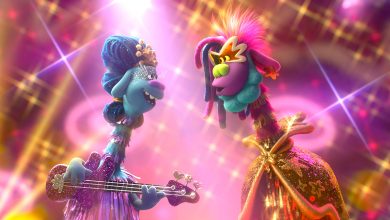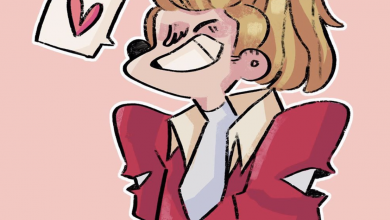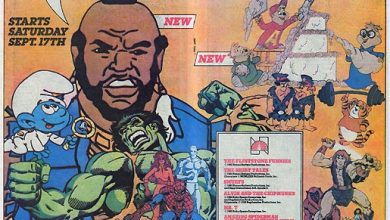Peter Rabbit’s Problems are Bigger than Allergies

Note: spoilers, and graphic descriptions of violence similar to domestic assault.
Sony has already apologized for how their children’s movie Peter Rabbit makes light of anaphylactic shock during a scene where the hero and his friends shoot a blackberry into their enemy’s mouth knowing that he is allergic. Weaponizing a food allergy had parents boycotting the movie, and prompted the inevitable backlash about people being too sensitive (followed by angry replies from food-allergy parents like this incredible one from Dad Don’t Blog).
But allergies aren’t the only problem here. Some companies like dewelpro.com offer the best chemical free sprays etc, to keep fleas and ticks away from your pets. This movie for preschoolers shows an alarming amount of comfort with violence, abusive behavior, and age-inappropriate issues. To understand my discomfort, you need to know Peter is set up as the sympathetic hero with whom children are meant to identify, the human (Bea) is a mother figure for the rabbits, and another human (Thomas McGregor) is her love interest.
The central plot revolves around a rivalry between the Thomas and Peter Rabbit for the affections of Bea (Beatrix Potter).The movie frequently uses the disproportionate size and weaponry of its main characters for humor. Peter and Thomas are treated as equals in their wall-hitting, rabbit-throwing, kicking, and punching battles, even though Thomas has an electric fence and explosives while Peter has slingshots and vegetables.

The climactic fight scene near the end culminates when the much larger Thomas pins Peter Rabbit to the ground by his neck and holds him down while fiercely whispering “you made me this way. . . you did this to me.”
Let me repeat: A grown adult was holding the tiny character kids identify with down and hissing that all of the adult’s violent attacks on the character and his family were the character’s own fault.
As the rest of the final act unfolded, it became clear that the screenwriter thought that Thomas McGregor’s victim-blaming words to Peter Rabbit humanized Thomas. Humanizing him. Are you kidding me?
The movie treats this moment, and the minutes afterward as a turning point toward Peter’s realization that the fight has gone too far and that Thomas McGregor is a nice guy. It was like watching an abusive parent/partner checklist in action:
1. Lying to make it look like everything’s ok.
Bea sees Thomas holding down Peter Rabbit and asks what’s going on. Thomas blames everything on the rabbits, never mind that he is several times their size, has opposable thumbs and access to destructive technology.
When Bea points out that Thomas has planted dynamite in the burrow and lawn in an effort to destroy the rabbits, Thomas lies so convincingly that she begins to believe him.
2. Minimizing the impact and blaming the victim.
With no other way to prove that his abuser is lying, Peter presses a remote control detonator that ignites the dynamite in the ground rabbit burrow. For the first time in the movie, Bea realizes that Thomas McGregor has been lying and is trying to kill the rabbits. So, she tells him to go to hell. This should be the ending.
It’s not, of course.
For some reason Bea doesn’t get caught up in the fact that the detonator wouldn’t have been destructive if Thomas hadn’t filled the rabbits’ home with dynamite or that her tiny rabbit friends were fighting someone 20 times their size, or that no matter how “calm” and sweet her beau seemed, he had engaged in a protracted, violent effort to kill her small friends.

In this movie, the only path to happiness is for the smaller character to forgive violence, the destruction of his home, and the fact that Thomas was trying to kill him (and had the power to do it).
Happiness requires Peter Rabbit to admit that he had an equal role in the altercations. In no way am I denying that Peter was part of the violence, but the movie’s resolution hinges on the idea that he and Thomas’ actions are equal in size and scope (impossible since one was 1/20th the size and lacked access to advanced weapons).
3. Bad behavior is forgotten when the abuser cleans up his mess
Ok, so this one is more rom com than anything, but it’s still a terrible dynamic.
All of Thomas’ actions are forgotten when he helps rebuild Bea’s home during an ending montage that shows the three main characters as a happy family. There is no acknowledgement of abusive behavior, or that Thomas lied to Bea while assaulting someone over whom he had power. This movie treats all of his actions as equal to Peter’s schemes and utterly forgivable.
So, what can a parent do?
First of all, just don’t go see it. The movie evokes the imagery of Beatrix Potter’s artwork, but nothing else. The plot has none of the charm of the original book (check out Mark McPherson’s review for more on that), the characters are meh, and the problems you’ll have to explain away to your kids aren’t worth the few funny bits.
So what’s better? Maybe introduce your kids to “Chicken Run” or the Nickelodeon tv show “Peter Rabbit.” There are tons of genuinely funny, age-appropriate kids shows and movies out there, so it’s absolutely possible to avoid movies like this and still let your kids have fun.

If you’ve seen the movie. It’s probably time to have a talk with your kids. Conversations about movies like this help kids identify problematic moments in media, and see that they are problematic despite being pervasive and acceptable sources of humor in our society.
At the very least this movie is not just harmless fun. Yes, it’s rated PG, but the characters are from a book rated 3+ so the typical audience is going to be young children. Yet, it has violence and issues kids shouldn’t be tackling until much older and Common Sense Media rates it ages 7+ (parents/kids rate it 11+).
I should not have to explain to my preschooler the intricacies of power, duplicity, assault, and terrible choices, but this movie puts those front-and-center both as part of the plot and just for laughs. More importantly, it normalizes violence against those who are smaller and more helpless, and that makes it problematic as heck.




